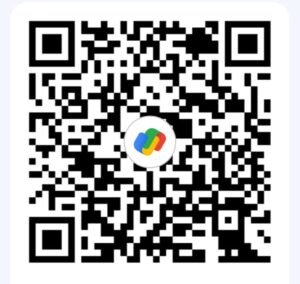Managing a remote workforce comes with unique challenges. You can’t see what your field teams are doing in real time, you can’t track task progress with certainty, and you’re often left relying on delayed, error-prone reports.
That’s where Field Force Management software comes in handy.
It gives field managers real-time visibility into team activity, helps them assign and monitor tasks efficiently, and enables data-driven decision-making. But it’s important to know what exactly to track. Not all metrics give the same value.
On that note, we bring you this article about the 4 must-track field operations metrics.
4 Metrics That You Should Track With Field Force Management Software to Boost Your Business
Here are four essential metrics every field manager should be tracking using field force management software:
1. Task Completion Rate
This metric shows the percentage of assigned tasks that are completed on time. It’s a direct indicator of your team’s productivity and efficiency. A team that starts 40 tasks and completes 35 of them is better than a team that starts 60 tasks but completes 35.
You need to check:
- Are certain field reps consistently missing deadlines?
- Are some tasks being reassigned repeatedly?
- Are specific locations or customers causing delays?
With field force automation software, you can track real-time task status (pending, in-progress, completed) with location and time stamps. Some tools also allow automated alerts for overdue tasks or missed SLAs, so you can step in early.
2. Average Time per Task or Visit
Understanding how long it takes to complete different field tasks helps you optimize team schedules, detect inefficiencies, and uncover training needs.
If you’re into pharma business, you need your employees to thoroughly explain the product to clients. It can be technical and time consuming. Similarly, FMCG businesses need quick conversions and multiple client visits a day.
You need to ask yourself the following questions:
- Are certain reps taking longer than average?
- Is extra time being spent on tasks that should be quick?
- Are follow-ups eating up valuable time?
Field force management software automatically logs reps’ task activity. You can check in your desktop app:
- Task start/end time
- Total task duration
- Total stops taken between task
- Geofence violations during tasks
3. Distance Travelled Per Day
Some field jobs are stationary while others require frequent movement. Industries like agri input, FMCG, and marketing demand a lot of travelling from field reps.
They visit various clients, pitch or sell products, collect documents or payment, run roadshows, and more.
Thus, tracking how much distance your employees covered in a day can reveal information about
- Territory mapping
- Staff productivity
- Fuel expenses
- Route selection process
- Suspicious route deviations
One of the benefits of field force management software is offering various distance reports. It lets you track distance travelled between tasks, within a task and the overall distance.
With real-time GPS Tracking Software and route history, managers can analyze movement patterns and create more efficient schedules.
Geo-fencing can also help validate check-ins at assigned locations. Field employee tracking software even let managers playback their reps’ route history.
4. Proof of Work Collected
If a teacher assigns a student homework, she checks it the next day, right? She cannot just rely on the student’s word that he completed the homework.
Similarly, when you’re managing a field business where the stakes are much higher, you need proof of work. If your agents say they visited 5 locations or onboarded 10 new clients, then this data has to be documented.
How? Well, field agents capture proof of work in various ways. They:
- Use audio files for voiceover or collecting customer feedback
- Take client signatures digitally
- Click pictures and makes videos of their field activities.
- Upload documents like warranty claims, AMC forms, client IDs
- Scan barcodes to authenticate products
In addition, field reps also distribute digital forms where clients can file their own data. This way, reps can gather data in bulk. The collected forms and new customers onboarded show up in reports and on a live dashboard.
All the forms and digital proof of work is uploaded with geotags and timestamps. Data capture help managers gain relevant insight into the market, customer behaviours, track staff performance and reduce disputes.
Use Automated Dashboards to Your Advantage
All these metrics are far more useful when viewed together. A good field force management platform makes this possible. It is equipped with a centralised dashboard displaying:
- Agent performance
- Region-wise productivity
- Live Task status
- Lead conversion tracking
- Attendance Trends
- Daily operational expenses
- Total orders collected
This allows you to make data-driven decisions instead of chasing updates via WhatsApp or EOD reports.
Wrapping Up
Managing field teams without real-time data is like driving blindfolded. It’s bound to backfire.
If you can’t measure your workforces’ performance, you can’t improve, fix issues or reward hard workers. This is why you need to track metrics like task completion rate, average task time, distance travelled, and proof of work.
These metrics give you get a clear, actionable picture of your team’s performance. Want to track these metrics effortlessly? Try one of the best field force management software like TrackoField.





















